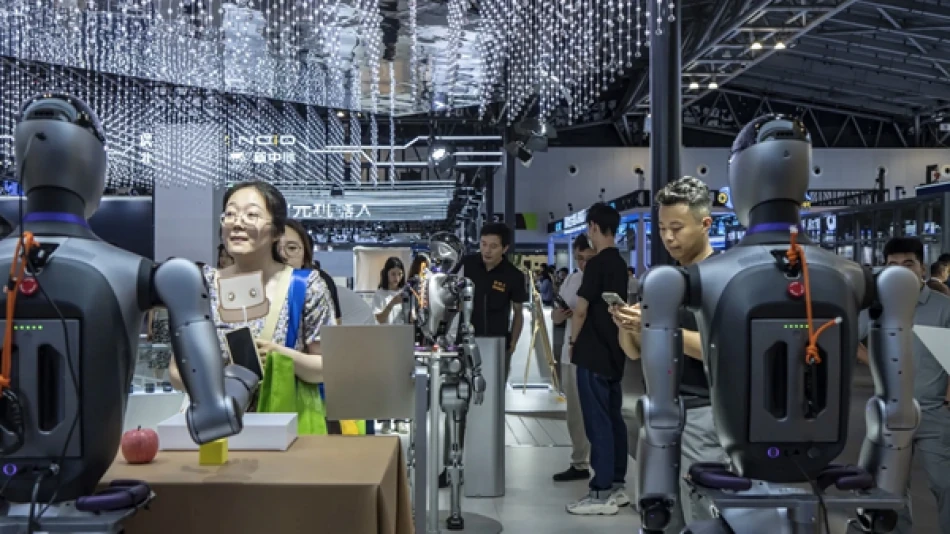
Beijing Hosts Global Robotics Conference 2025: Shaping the Future of Automation
China Doubles Down on Robotics Supremacy with Massive 2025 World Conference
China is cementing its position as the global robotics powerhouse with the launch of the 2025 World Robot Conference in Beijing, featuring over 200 companies and 1,500 innovations—nearly double last year's showcase. The timing is strategic: as China already controls two-thirds of global robotics patents and industrial robot production, this conference signals Beijing's intent to maintain technological dominance in an increasingly automated world.
A Show of Force in Beijing's Tech Hub
The conference, running through Tuesday in Beijing's Economic and Technological Development Zone, operates under the theme "Making Robots Smarter, Making Embodied Agents More Intelligent." This isn't just corporate marketing speak—it reflects China's broader ambition to lead the next wave of artificial intelligence integration with physical robotics systems.
More than 400 participants, including international scientists, experts, and business leaders, are gathering across 20+ specialized forums to discuss cutting-edge trends and applications. The scale represents a significant expansion from previous years, with over 100 products making their global debut.
From Industrial Floors to Operating Rooms
The exhibition floor tells the story of robotics' expanding reach beyond traditional manufacturing. Visitors can observe highly flexible quadruped robots designed for complex terrain, specialized rescue and inspection units, and precision medical catheter-forming robots. Perhaps most striking are the full-body humanoid robots, with 50 manufacturers competing to showcase their latest developments in this rapidly evolving segment.
The diversity of applications—from lawn-mowing robots to life-saving medical devices—demonstrates how robotics is transitioning from niche industrial tools to ubiquitous solutions across sectors.
China's Patent Dominance Tells the Real Story
Behind the impressive displays lies a more significant narrative: China's commanding lead in robotics intellectual property. In 2024, Chinese entities filed two-thirds of all global robotics patent applications, while the country produced 556,000 industrial robots—maintaining its position as the world's largest manufacturer in the sector.
This patent concentration mirrors patterns seen in other strategic technologies where China has prioritized domestic innovation and manufacturing capacity. Unlike previous tech cycles where Western companies held patent advantages, China appears to be writing the rulebook for next-generation robotics.
Strategic Implications for Global Markets
For international competitors, China's robotics surge presents both opportunities and challenges. Companies seeking to integrate robotics solutions may benefit from Chinese innovation and competitive pricing, but they also face potential supply chain dependencies similar to those experienced in semiconductors and renewable energy technologies.
The conference's emphasis on international cooperation through 31 side events suggests China recognizes the need for global partnerships, even as it builds domestic capabilities. This approach differs markedly from more insular tech development strategies, indicating Beijing's confidence in its competitive position.
The Automation Race Intensifies
China's robotics push comes as global labor markets face demographic pressures and rising wage expectations. Countries like Japan and Germany have long relied on industrial automation, but China's scale and integrated approach—combining manufacturing, software development, and AI research—creates a different competitive dynamic.
The focus on "embodied agents" particularly signals China's bet on AI-powered physical systems that can adapt to complex, unpredictable environments. This represents a shift from programmed industrial robots to learning systems that could revolutionize service industries, healthcare, and domestic applications.
As the conference unfolds this week, global observers will be watching not just for impressive demonstrations, but for signals about China's next moves in a technology that could reshape economic competitiveness for decades to come.
 Layla Al Mansoori
Layla Al Mansoori







